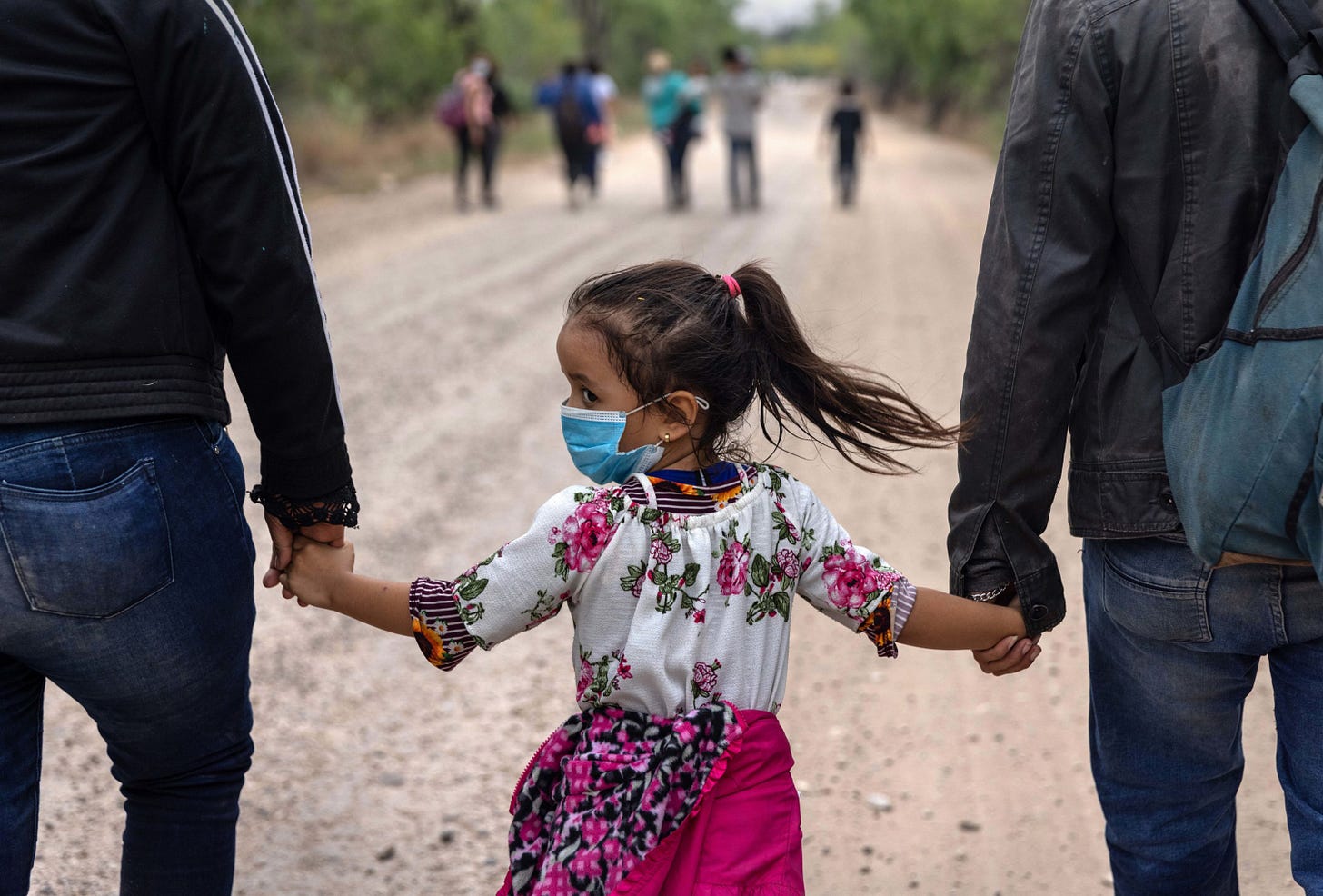What About <i>Un</i>comprehensive Immigration Reform?
If a grand bargain is impossible, a series of discrete steps might be almost as good.

With public opinion polls showing that a majority of Americans think President Biden is handling immigration poorly, the administration’s immigration reform package is in dire need of a reboot. Fairly or not, many Americans blame the administration for the huge increase in unaccompanied minors who have shown up at the border, which could once again derail immigration reform as it did in 2014.
It’s a vicious cycle: As long as large numbers of Americans believe we have lost control of our borders, arguments in favor of overhauling our immigration system have a difficult time breaking through the noise. As long as the immigration system remains unreformed, periodic immigration crisis will erupt where our policy collides with reality.
But the situation is not hopeless, as it was for the last four years. There are elements of immigration reform that have broad support among the public, such as relief for the so-called Dreamers—undocumented young adults who came to the U.S. as children and have lived their entire lives here. There are even some reforms that many Republicans favor, such as providing legal status to agricultural and other temporary workers who fill jobs in the labor market that few Americans are willing to do. President Biden could work across the aisle to move parts of his immigration agenda forward this year.
In March, the House passed two bills on these issues with bipartisan support: The American Dream and Promise Act and The Farmworkers Modernization Act. Some 30 Republican members joined 217 Democrats in passing the latter, while only 9 GOP members voted for the former. The administration’s reluctance to push immigration reform while they focus on other priorities, namely infrastructure and the president’s American Families Plan, has stalled action in the Senate, reducing the chances of legislation being enacted in this Congress. The 2022 elections will make passing any immigration bill next year very difficult as the GOP finds itself beholden to the Trump base to try to win back control of the House, so the longer these bills languish, the less likely they are to be passed.
The Dreamers bill passed by the House includes some provisions that will make it difficult to get Senate Republican votes. Senate Minority Leader Mitch McConnell has already said he will oppose moving a Dreamers-only bill forward. Nonetheless, providing the population of young adults covered by the Obama administration’s original Deferred Action for Childhood Arrivals (DACA) permanent legal status and a path to citizenship is broadly popular, with 72 percent of Americans—including 55 percent of Republicans—supporting it.
Some GOP senators oppose provisions in the House bill that would expand the population who could benefit by providing a broader eligibility time horizon Dreamers and by including individuals in the Temporary Protected Status program. They argue that doing so essentially turns Temporary Protected Status for victims of natural disaster or civil turmoil into a backdoor for permanent residency that was never intended.
So, what can get done? Before Republicans join Democrats on legislation that will give legal status even to those already living in the U.S., like Dreamers or farmworkers, the situation at the border will need to be addressed. Republican Sen. John Cornyn has teamed up with Democratic Sen. Krysten Sinema to introduce the Bipartisan Border Solutions Act, along with an accompanying piece of legislation in the House supported by two Texas representatives, Republican Tony Gonzales and Democrat Henry Cueller. The bill deals head-on with the issue causing the greatest concern right now, namely the flood of asylum seekers and migrants at the border. It sets up at least four regional, short-term processing centers at high traffic areas along the southern border for medical testing, identity verification, and legal orientation and issuance of court appearance documents. Migrants would be held at such centers for a maximum of 72-hours before being transferred or released. Importantly, it calls for immigration courts to prioritize cases arising during an “irregular migrant influx event,” such as we’ve been experiencing over the last few months. It also establishes three-year pilot-programs to provide expedited asylum processing, including allowing U.S. Citizenship and Immigration Services officers to adjudicate some asylum cases in the first instance.
The Heritage Foundation and some other conservative groups have attacked the bill, saying it rewards President Biden for a crisis at the border of his own making—but these criticisms ignore that every president in recent history, including President Trump, faced similar crises due to deteriorating economic and humanitarian conditions in Central America and elsewhere, and the difficulty our outdated immigration imposes for workers seeking to come to the United States legally.
Bills like the American Dream and Promise Act, the Farmworkers Modernization Act, and the Bipartisan Border Solutions Act are no substitute for comprehensive immigration reform. But, as such a compromise has proved elusive for decades, it’s prudent to settle for small steps. A Dream Act, like that offered by Sens. Dick Durbin and Lindsey Graham, becomes more imperative by the day as current DACA provisions might be struck down in a pending court case. In addition to Dreamers, the economy desperately needs undocumented farmworkers and other essential workers to be legalized.
If comprehensive reform is impossible, piecemeal improvements are better than nothing. But legislation that helps address the current influx of children and families at the southern border is a necessary first step.


